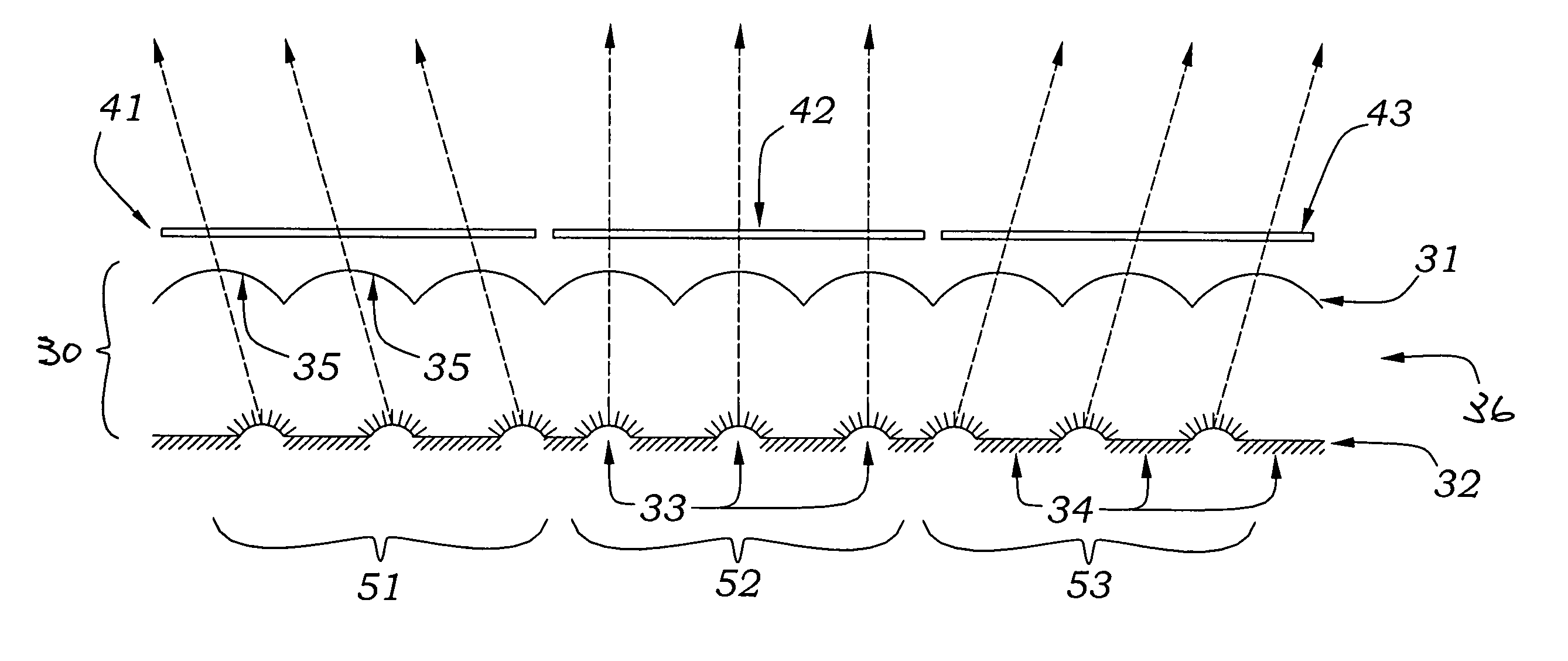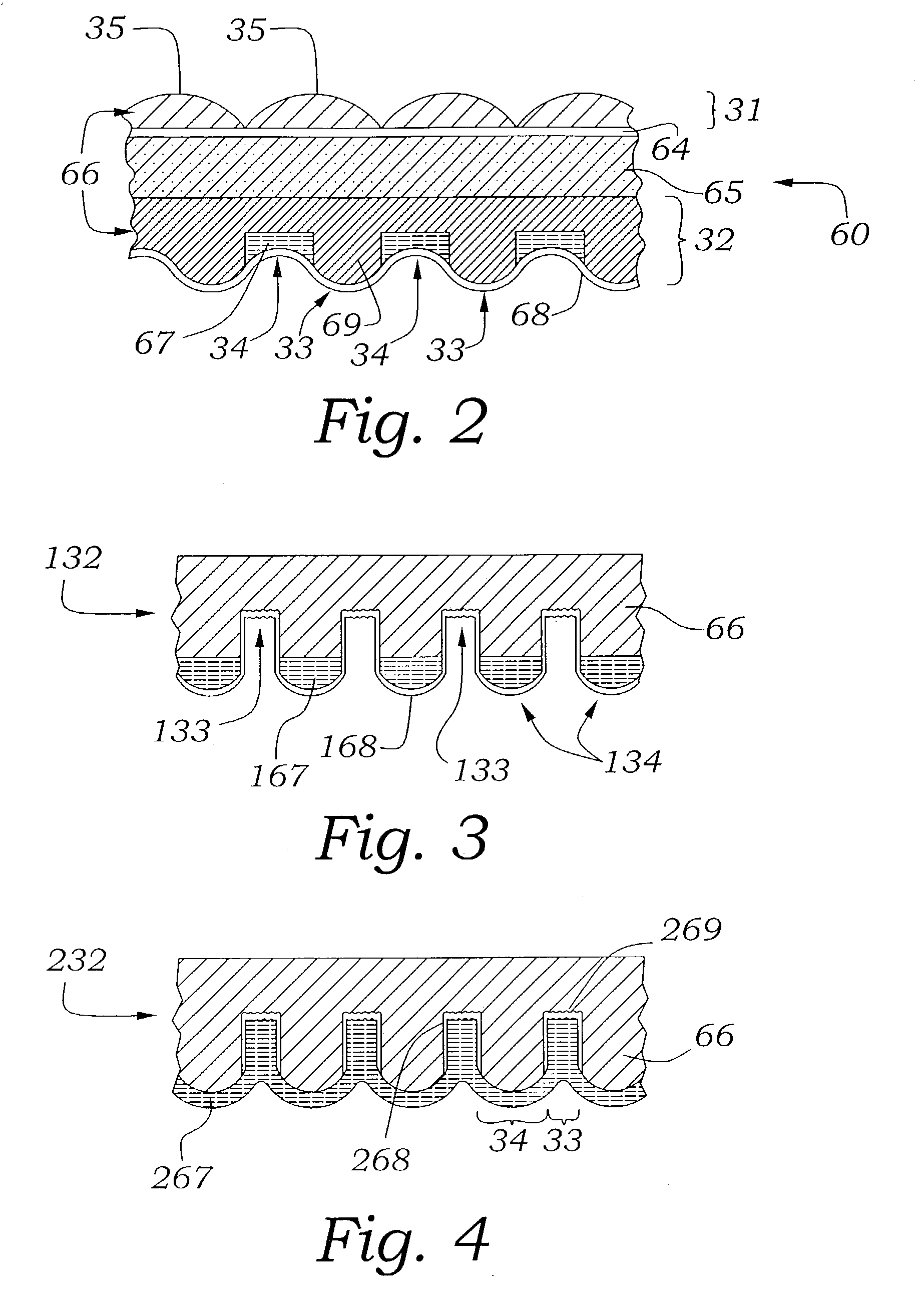Micro-optics for article identification
a micro-optic and article technology, applied in the field of optical security devices, can solve the problems of limited security provided by embossed holograms, inability to prevent holographic copying methods, and easy counterfeiting, and achieve the effect of reducing the quality of reproduction
- Summary
- Abstract
- Description
- Claims
- Application Information
AI Technical Summary
Benefits of technology
Problems solved by technology
Method used
Image
Examples
first embodiment
[0089]While FIG. 2 shows one preferred embodiment of the invention, there are numerous alternative ways of designing the light control optics, as shown in FIGS. 3–5. FIG. 3 shows an alternative design in which the geometric pattern of the light control optics 132 is the reverse of that shown in the preferred embodiment. In other words, the bright zones in this embodiment are located in those areas where the dark zones were located in the In this embodiment, the dark zones 134 are formed in the recessed notches created in the reflective substrate 168 with an opaque material 167 and the bright zones 133 are formed in between. The relative positions of the dark zones and the bright zones along the light control optics are reversed from that of the embodiment shown in FIG. 2. In the embodiment of FIG. 3, the present invention will function in a light reflective mode due to the presence of the reflective layer 168.
[0090]FIG. 4 shows a second alternative design for the light control opti...
second embodiment
[0118]FIGS. 15a and 15b illustrate a second embodiment for interleaving the images in emulsion 830. The emulsion 830 is exposed to the right image through mask 840. The emulsion 830 can be exposed through contact printing or by projection with an enlarger (not shown). The mask 840 is then shifted to cover the right image strips and the emulsion is exposed to the left image. The emulsion is then developed, thereby producing interleaved left and right image strips in the emulsion, as shown in FIG. 15b. Although only left and right image strips are shown in FIGS. 13–15b, these embodiments are not limited to any particular number of images. Left and right images are shown merely for ease of illustration. The number of images which can be interleaved in emulsion 830 is limited only by the limitations of conventional techniques used for interleaving images in an emulsion.
[0119]One of the advantages of the invention described with regard to FIGS. 13–15b is that conventional photoprocessing...
PUM
 Login to View More
Login to View More Abstract
Description
Claims
Application Information
 Login to View More
Login to View More - R&D
- Intellectual Property
- Life Sciences
- Materials
- Tech Scout
- Unparalleled Data Quality
- Higher Quality Content
- 60% Fewer Hallucinations
Browse by: Latest US Patents, China's latest patents, Technical Efficacy Thesaurus, Application Domain, Technology Topic, Popular Technical Reports.
© 2025 PatSnap. All rights reserved.Legal|Privacy policy|Modern Slavery Act Transparency Statement|Sitemap|About US| Contact US: help@patsnap.com



